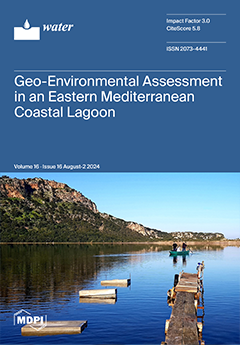To explore the spatial distribution characteristics of soil physical properties and soil erosion in sloping farmland with ridges in the black soil areas of northeast China, sloping farmland with ridges built with woven bags (RW) along the contour lines was selected as the research object, and another sloping farmland was selected as the control (CK). Soil samples were collected from both RW and CK at uniform spatial intervals to measure key indicators of soil properties in the surface layer (0–15 cm), including soil water-holding capacity, soil structure, and annual average soil loss (A). The results showed that: (i) RW exhibited a significantly higher overall field water-holding capacity compared to CK, with soil moisture characteristics more evenly distributed spatially. Soil bulk weight, fractal dimension, and soil aggregate destruction in RW were reduced by 1.09%, 0.65%, and 4.61%, respectively, compared to CK. Additionally, soil total porosity, capillary porosity, mean weight diameter (
MWD), and geometric mean diameter (
GWD) were more evenly distributed spatially in RW. (ii) On the up-slope, soil water content and
DR>0.25 in RW had a higher increase than those of CK. On the mid-slope, soil field water-holding capacity, capillary porosity,
MWD, and
GWD in RW had a higher increase than those in CK. On the down-slope, RW had a 7.67–10.79% increase in soil water content, saturated water-holding capacity, field water-holding capacity, and capillary water-holding capacity compared to CK, with total soil porosity and soil capillary porosity increasing by 2.84% and 15.51%, respectively. (iii) Annual average soil loss (
A) of RW was reduced by 61.85–99.64% compared to CK, based on the China Soil Loss Equation (CSLE). (vi) Soil water-holding capacity and soil structure characteristics of RW showed benefits compared to CK, with the benefits ranging from 1.01 to 1.09, while the benefit of
A reached 2.46. This study is significant for understanding the spatial distribution of soil erosion on sloped farmland in black soil areas and for the effective application of soil and water conservation measures.
Full article





